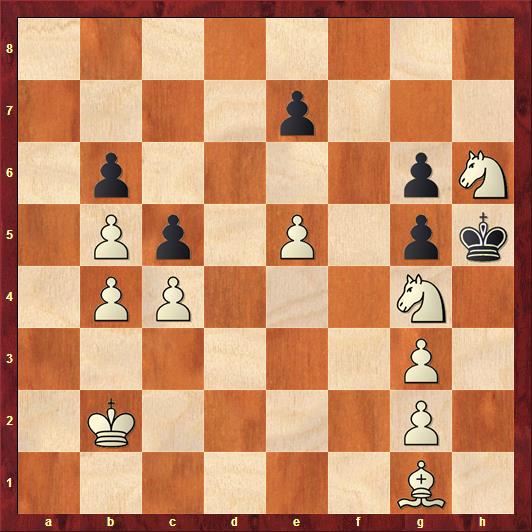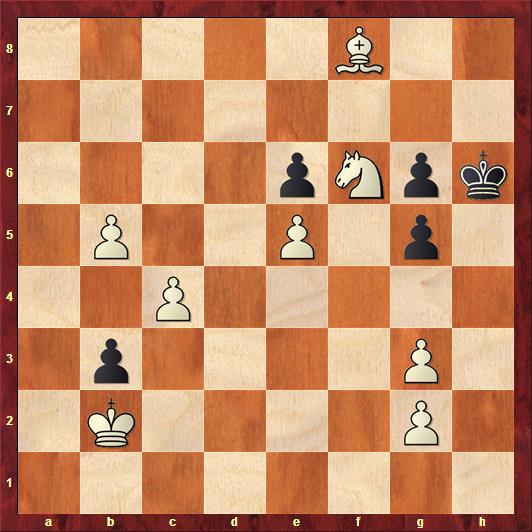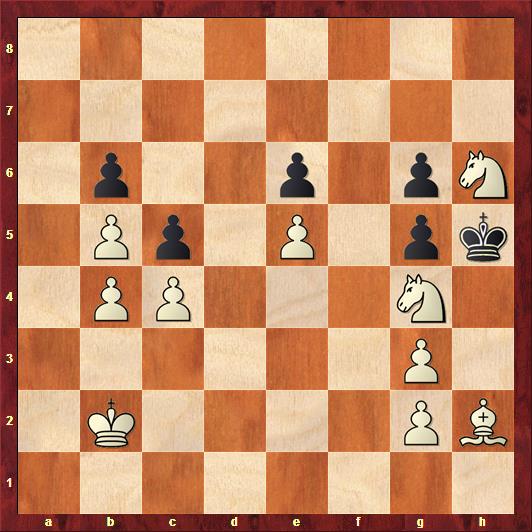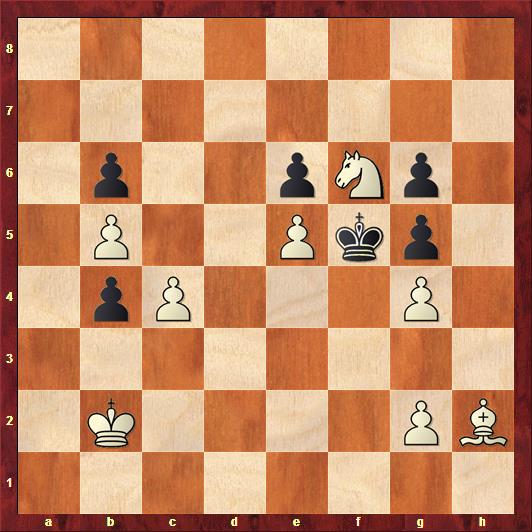I'm a bit pressed for time today, so I've chosen a simple, but very charming, problem for you this week. This was composed by Fritz Giegold and Herbert Engel in 1973. White is to play and mate in five:

Things certainly look bad for black, since he's boxed in and hard up for moves. But considerable ingenuity is needed to deliver checkmate in just five moves. We'll get right to the action. The key move is 1. Bg1!

Like all good keys, it's a seemingly pointless move. Black only has two legal moves in reply. The first leads white to sacrifice his knight on h6: 1. ... cxb4 2. Bxb6 b3 3. Bc5 e6:

Of course, black could have interchanged his last two moves. Now we are ready for the big finale:
4. Nf6+ Kxh6 5. Bf8 mate.

That's nice, but it doesn't really explain the key move. This would have worked just as well if white had moved his bishop to f2 instead of g1. But now we must consider the second line, in which white sacrifices his knight on g4. 1. ... e6 2. Bh2!

Well, that explains everything doesn't it? Would you believe that white has to make sure that e5 and f4 are guarded? Play continues 2. ... cxb4 3. Ng8. This threatens to give mate on the next move by placing a knight on f6. So play continues 3. ... Kxg4 4. Nf6+ Kf5 5. g4 mate.

Like I said, simple but charming. See you next week!
- Log in to post comments

I must say the 2nd part of this solution's a corker! I NEVER would have found 2. Bh2.
Nice, too, that even if 1. bxc6 en passant is legal, it doesn't work with the White King on b2! (If the King were on c2, then 1. bxc6 ep, b5, 2. c7 bxc4, 3. c8Q c3 (NOT with check) 4. Qh8 (or f8) ...e6 (only legal move) 5. Nf6#.
I am out of time to double check this. Just tossing it out there hoping for confirming or correcting comment. Thanks.
like you said simple but charming.. it was so much easy and nice trick. thanks for sharing.